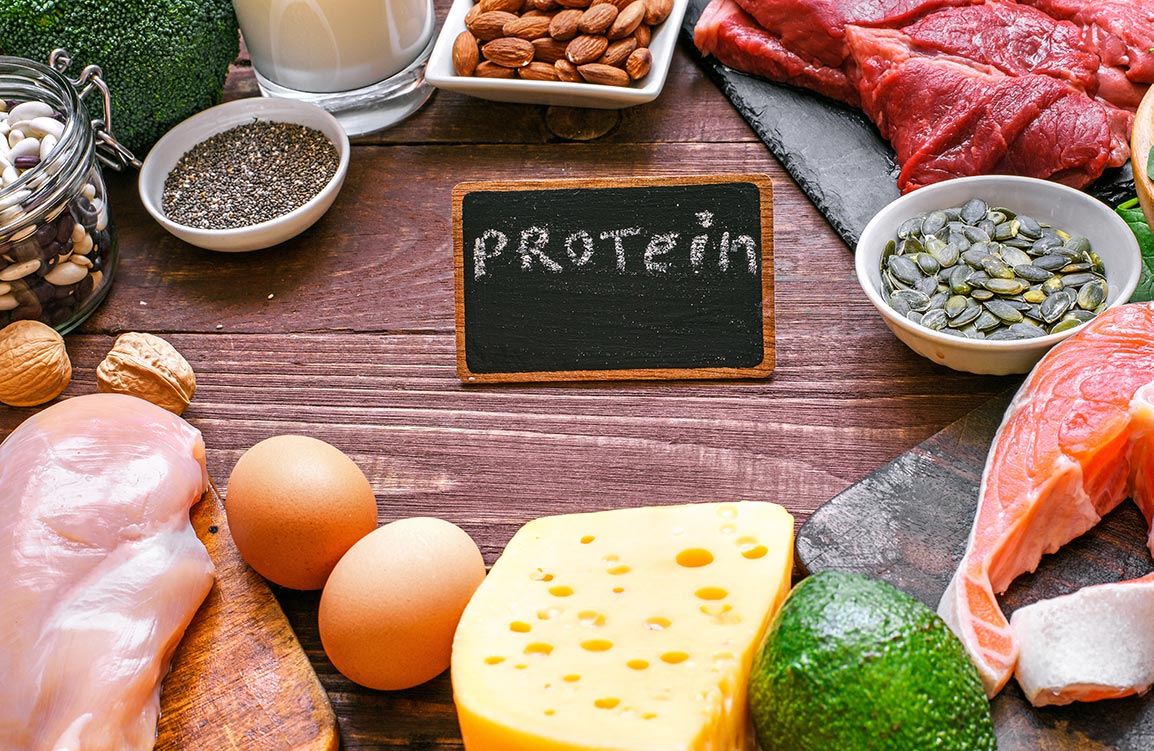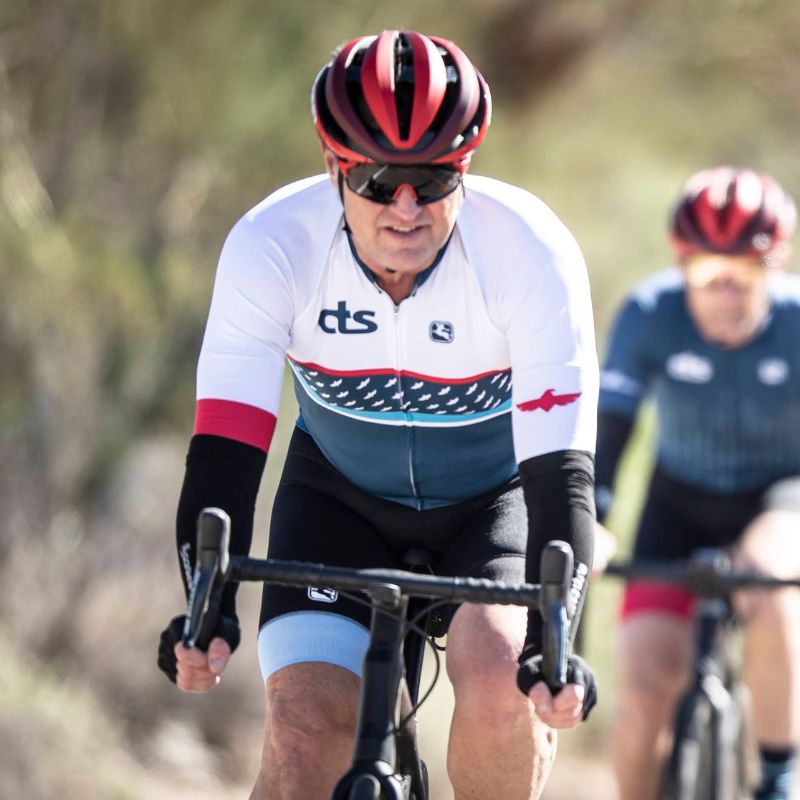
Protein: Why Athletes Struggle to Get The Right Amount
By Chris Carmichael, inspired by Renee Eastman
This blog post was entirely inspired by CTS Coach Renee Eastman, who recently completed her National Academy of Sports Medicine Nutrition Coach certification. In social media posts and a series of emails, Renee reminded me of one of the biggest challenges we see athletes face when it comes to consuming enough protein. It’s not that they don’t know they need more protein than their sedentary counterparts; it’s that athletes have misconceptions about how much protein they’re actually getting from ‘high protein’ foods.
First, some basics on protein. I’m going to keep it brief for the sake of this article, but I encourage you to read this or this if you need a deeper dive into the role of protein for athletes. The recommended daily intake of protein is 0.8 grams per kilogram of body weight. The Academy of Nutrition and Dietetics recommends 1.2-2.0 gram/kg for athletes, depending on training focus. Generally, that breaks down to 1.2-1.6 for endurance athletes and 1.4-2.0 for strength/power athletes. Female athletes in intermittent-intensity sports, which generally includes cycling, running, and triathlon, have a higher protein requirement than men, at the higher end of the Academy of Nutrition and Dietetics’ 1.2-2.0 g/kg range (Wooding 2017). Aging athletes (50+ years old) benefit from increased daily protein intake (1.6-2.0 g/kg) and larger amounts of protein per feeding (40 grams/meal rather than 20 grams/meal) for muscle protein synthesis, recovery, and long-term training adaptations (Doering 2016). And rather than concentrating protein consumption in one or two large feedings each day, it is better to consume 20-30 grams at a time during feedings throughout the day.
Considering that most overlapping ranges for recommended protein intake across different athlete groups, I’m going to use 1.8 g/kg per day as the target amount for a theoretical 75-kilogram (165 pound) masters athlete. Provided that this athlete is meeting their total daily energy requirement (protein requirements increase even further during caloric restriction), the daily target for protein would be 135 grams.
This is where the practical considerations get tricky for some athletes. How do you combine protein sources to cumulatively consume 135 grams of protein? Many athletes are familiar with lists of protein-rich foods but tend to over- or underestimate the amount of protein per serving in those foods.
Coach Renee Eastman illustrated this point very well in an Instagram post I have quoted below.
View this post on Instagram
“Eggs are good sources of protein, sure, but how many do you need to eat to get a decent serving (25 grams of protein)? That’s 4 eggs (290 calories).” Thankfully, the nutrition recommendations for eggs have moved away from restricting consumption to one-per-day to reduce cholesterol intake, but I find a lot of athletes have lingering hesitations about eating more eggs.
“Also, 25 grams of protein is about 1 cup (size of my fist, or about 3-4 ounces) of chicken breast (150 calories).” Meat, poultry, and fish have a high protein content by weight, meaning you can get a significant amount of protein from a relatively small portion. Protein from animal sources also has high bioavailability, meaning more of the protein in the food is absorbed into the body compared to protein in plant-based foods. While this is good news for athletes who eat meat, it does not mean vegetarians and vegans are at significant risk of protein deficiency. Athletes on plant-based diets can absolutely consume adequate protein to support performance training and competition.
“About one cup of 0% fat Greek yogurt or 2% fat cottage cheese has 25 grams (130 and 180 calories).” For athletes who consume dairy products, Greek yogurt and cottage cheese are good sources of protein, just be conscious of the amount of added sugar there can be in flavored versions.
► Free Cycling Training Assessment Quiz
Take our free 2-minute quiz to discover how effective your training is and get recommendations for how you can improve.
“Beans have protein… about 25 g in this entire can (385 calories).” A lot of athletes rely on beans and legumes for a significant amount of their protein intake, but don’t realize how many beans – either in terms of portion size or the number of times you eat them per day – it takes to get the job done. Beans are high in fiber, so they are filling. For athletes trying to manage bodyweight, high fiber foods can be a good way to feel full sooner and reduce caloric intake from a meal or an entire day.
“And finally, the one I love to hear about is peanut butter. Yes, it has protein, about 25 grams in half a cup (7 tablespoons). I’d love to eat that much peanut butter 🥜 😋 It would also be nearly half my calories for the day at 685 calories!” Now, it should be said that Renee is a very fit and strong athlete who is also small, so a total daily caloric intake of around 1400 calories is appropriate for her. One of the challenges smaller athletes face is that calories in energy-dense foods add up really quickly, so you have to be careful with portion sizes.
In practical terms, you’re not likely to rely on one protein source for an entire 25-gram serving. You might eat two eggs with breakfast and two hardboiled eggs as an afternoon snack. A few tablespoons of peanut butter can contribute to your daily intake without having to fulfill an entire 25-gram serving. And so on. But I think Renee’s comparison is a good way to get a better idea of how protein sources relate to each other; how much of these different sources is required to consume an equal amount of protein.
Doering TM, Jenkins DG, Reaburn PR, Borges NR, Hohmann E, and Phillips SM. Lower Integrated Muscle Protein Synthesis in Masters Compared with Younger Athletes. Med Sci Sports Exerc 48: 1613-1618, 2016.
Wooding DJ, Packer JE, Kato H, West DWD, Courtney-Martin G, Pencharz PB, Moore DR. Increased Protein Requirements in Female Athletes after Variable-Intensity Exercise. Med Sci Sports Exerc. 2017 Nov;49(11):2297-2304. doi: 10.1249/MSS.0000000000001366. PMID: 28692631.
► FREE Mini-Course: Learn How to Maximize Your Limited Training Time
Learn step-by-step how to overcome limited training time and get faster. Walk away with a personalized plan to increase your performance.
"*" indicates required fields


Comments 9
Pingback: Substantial Fitness Gains You Can Make After 50 (and 60!) - CTS
Pingback: What to Do After a Bad Workout - CTS
Pingback: Ultraendurance-Specific Guide to Protein - CTS
Pingback: How to Get Faster at Cycling - CTS
Thanks for this. I would love to see Renee write a post showing a day’s worth of all plant-based sample meals that have enough protein, without eating too many calories. You could use me as an example. I’m in my early fifties and weigh 66 kg. I know from experience I can eat 2,300 calories per day without gaining weight, and with 7-8 hours of strength and endurance exercise per week. So, the day’s worth of meals should fit into 2,300 calories and still provide 106 grams of total protein (1.6 grams/kg). This is the minimum, which might not be enough. And of course meals should contain lots of veggies, fruits and whole grains.
I would love to see this post because I haven’t figured out how to do it without replacing some of the whole foods with vegan protein powder. As you say, the amount of plant-based foods required to get this much protein is huge. Way too many calories (and bulk) — I couldn’t possibly eat an entire can of beans at every meal. Even with using protein powder, I’m still only getting about 1.0 – 1.1 grams/kg. This is no doubt affecting my performance as I often feel under-recovered. Thanks for considering.
Thanks Renee
WhT about protein supplements like protein bars and shakes?
Fulfils both criteria; high protein and law calories
I am sorry. This article is based on old research and is not current. Protein and esp animal based protein has been overhyped by research funded by meat and poultry lobby. There are so many scientific studies which have come out last two years you may want to update yourself instead of telling athletes to eat more meat. Happy to share sources but if you are a serious scientist you should be able to find it your self
Maybe you are misreading your sources. Plants haven’t suddenly, in the last two years become higher in protein. The article is much more about bioavailability and required quantities to to achieve a given level of desired protein intake. The info on beans is illustrative of the quantities required in a strictly veg diet. To achieve intake of 100gms of protein with a veg diet is very difficult given the quantities required. I speak from experience with this as I was first a vegetarian for more than a decade, and a very strict vegan for most of another decade, all the while training at a professional level and also tracking nutritional input for the entirety of that time. It is much easier with at least some meat to supplement, though I do understand your intentions.
Thank you Renee, congratulations on your studies. Very informative and
timely.